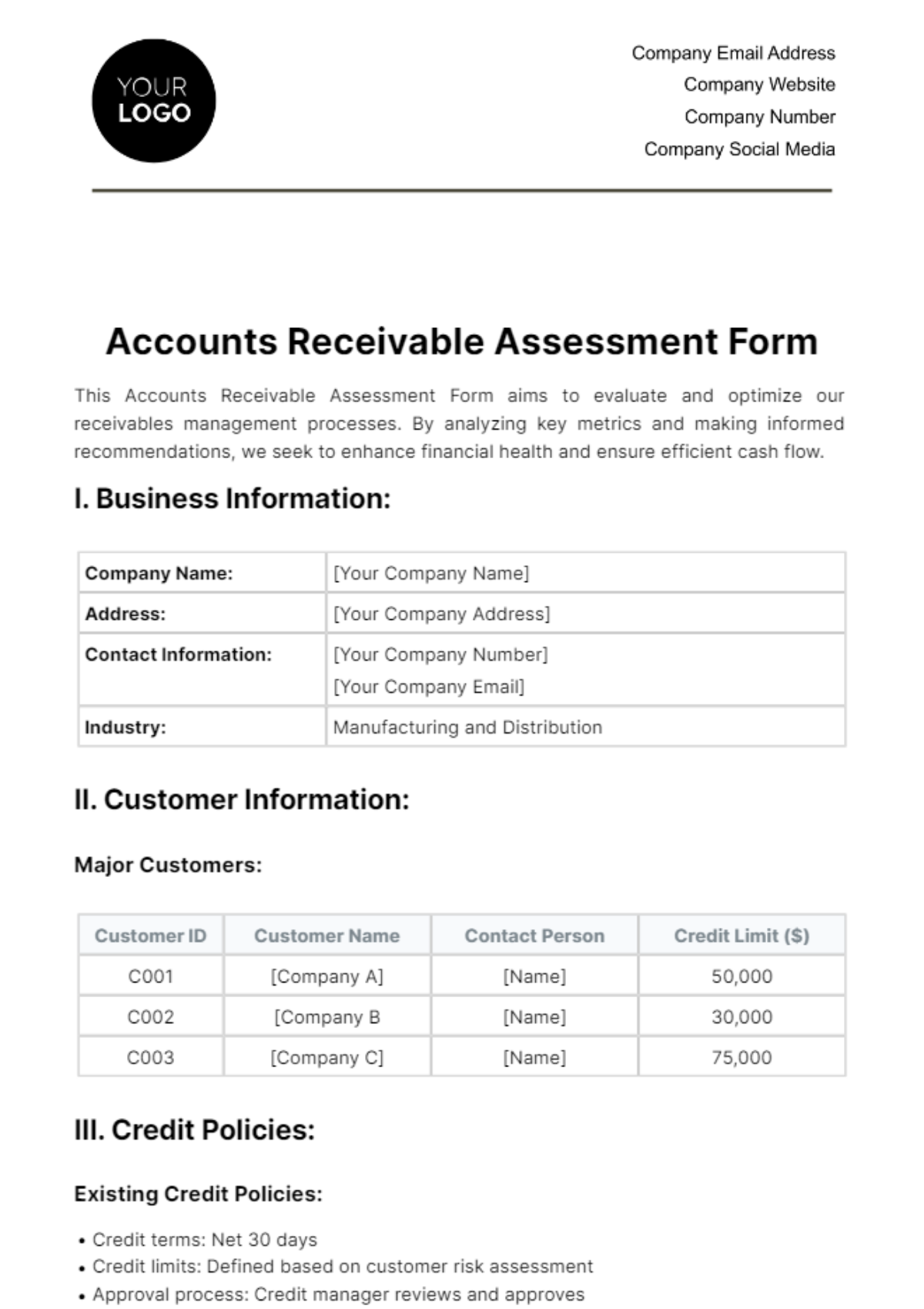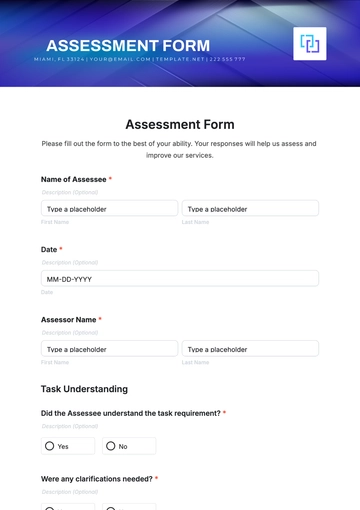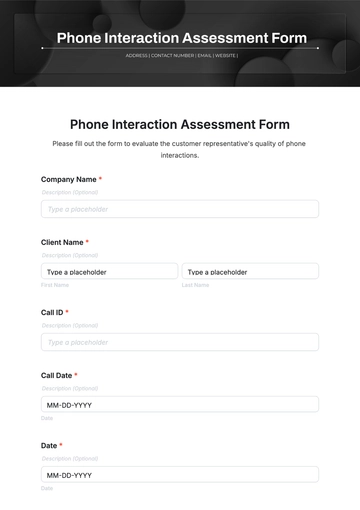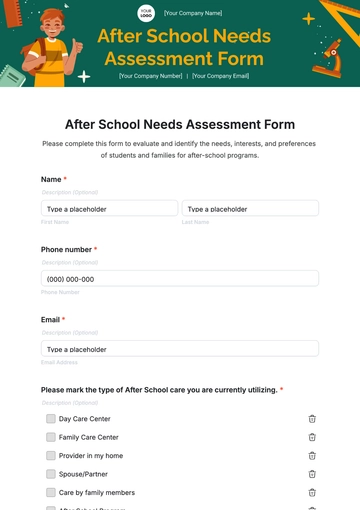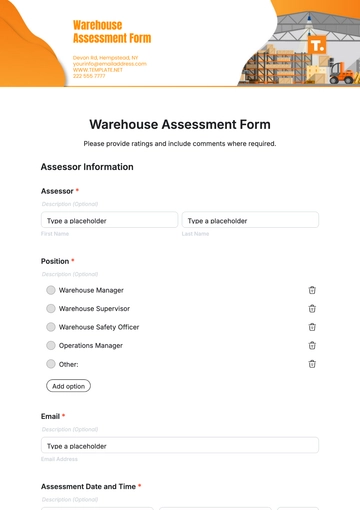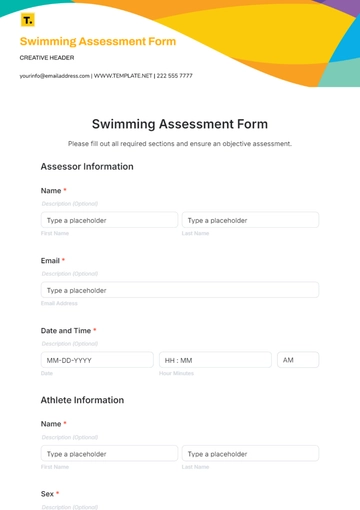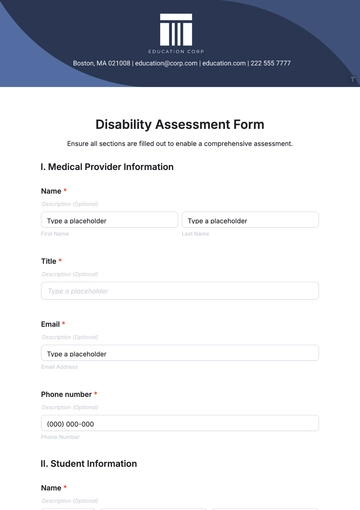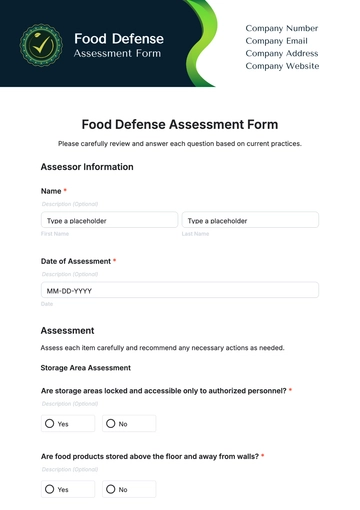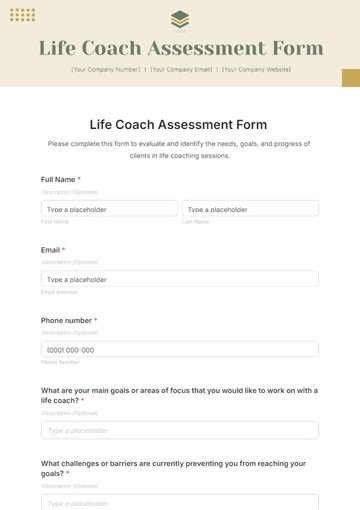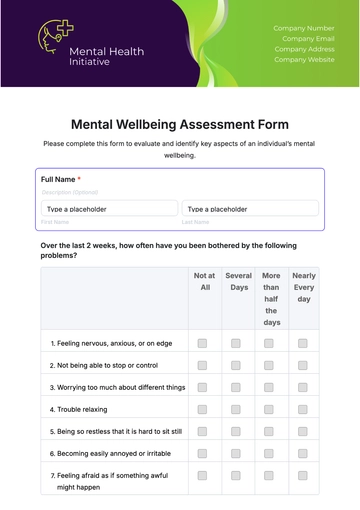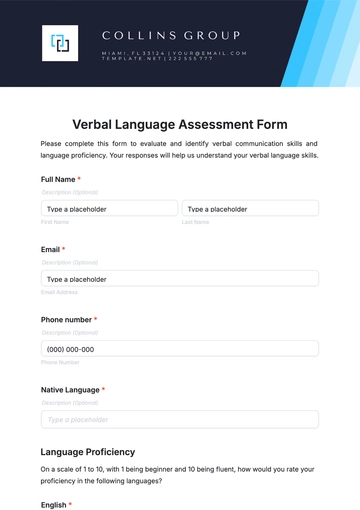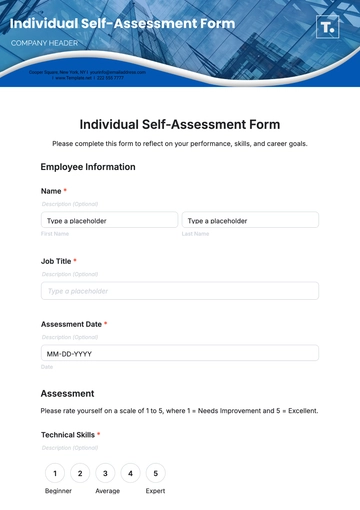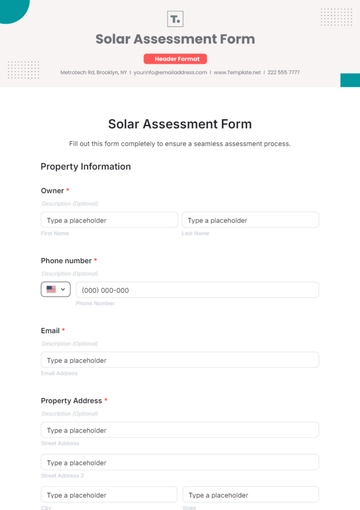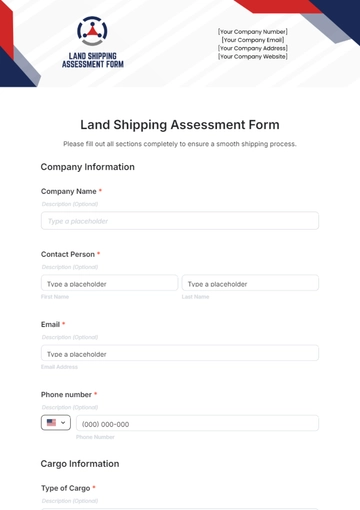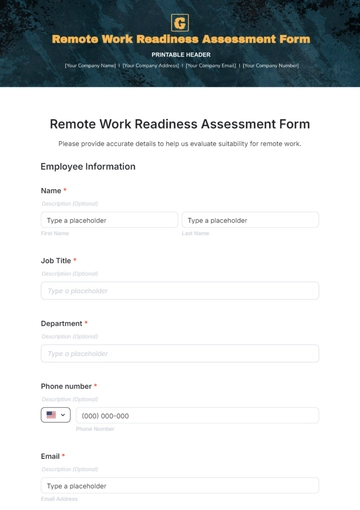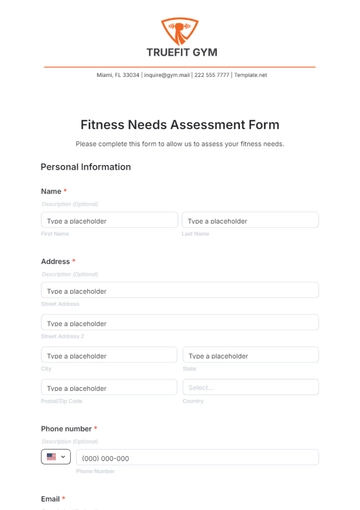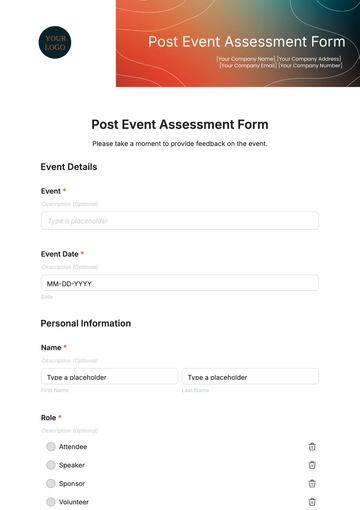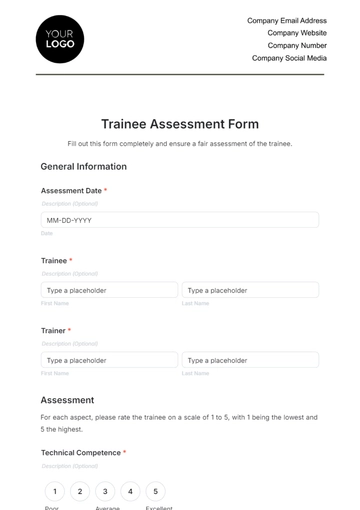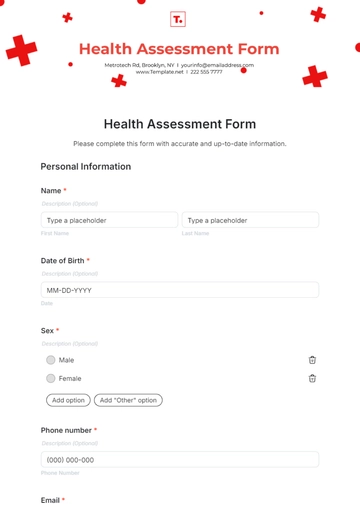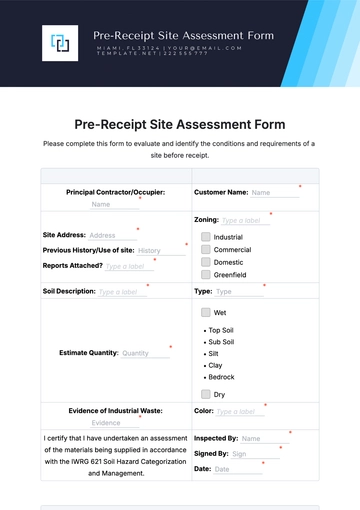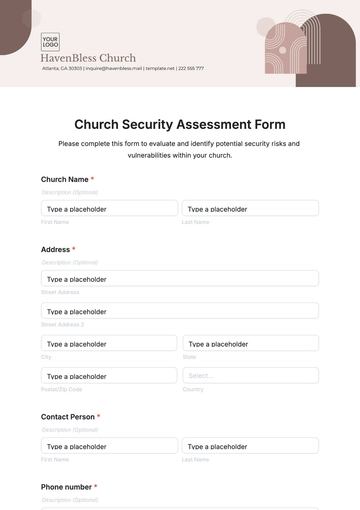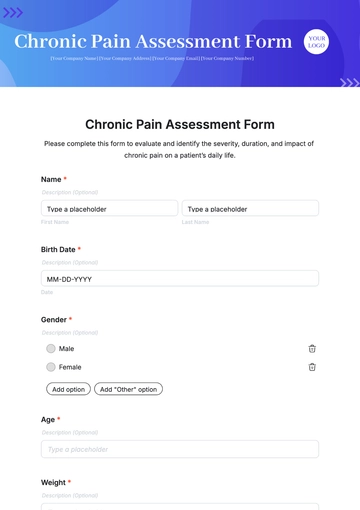Accounts Receivable Assessment Form
This Accounts Receivable Assessment Form aims to evaluate and optimize our receivables management processes. By analyzing key metrics and making informed recommendations, we seek to enhance financial health and ensure efficient cash flow.
I. Business Information:
Company Name: | [Your Company Name] |
Address: | [Your Company Address] |
Contact Information: | [Your Company Number] [Your Company Email] |
Industry: | Manufacturing and Distribution |
II. Customer Information:
Major Customers:
Customer ID | Customer Name | Contact Person | Credit Limit ($) |
|---|
C001 | [Company A] | [Name] | 50,000 |
C002 | [Company B | [Name] | 30,000 |
C003 | [Company C] | [Name] | 75,000 |
III. Credit Policies:
Existing Credit Policies:
Credit terms: Net 30 days
Credit limits: Defined based on customer risk assessment
Approval process: Credit manager reviews and approves
Recommendations:
IV. Invoicing and Billing:
Invoicing Processes:
Outstanding Balances:
Total Outstanding: $150,000
Overdue Invoices: $40,000
V. Aging Analysis:
Aging Categories:
Aging Period | Total Receivables ($) | Percentage (%) |
|---|
Current | 80,000 | 53% |
30 days | 40,000 | 27% |
60 days | 20,000 | 13% |
90+ days | 10,000 | 7% |
VI. Action Plan:
Immediate Actions:
Short-Term Actions:
Long-Term Actions:
VII. Conclusion:
The Assessment Form for Accounts Receivable shines a spotlight on potential areas where the credit policies, collection processes, and the way we communicate with customers could be improved. Additionally, the action plan thoroughly lays out a series of steps that can be taken to boost the efficiency within the accounts receivable department while also working to reduce the potential risk factors that can have a negative effect on the department's operations.
Accounting Templates @ Templates.net
